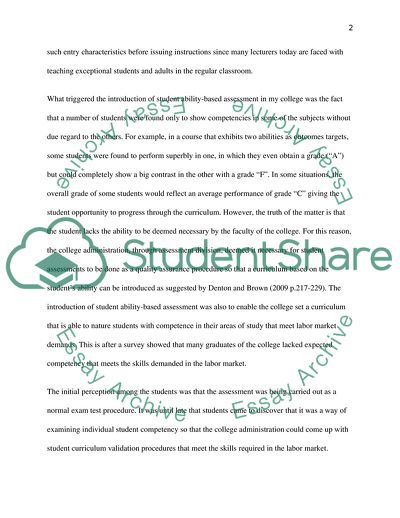Cite this document
(Quality Assurance Procedures with Regard to Students Ability-Based Essay Example | Topics and Well Written Essays - 1500 words, n.d.)
Quality Assurance Procedures with Regard to Students Ability-Based Essay Example | Topics and Well Written Essays - 1500 words. https://studentshare.org/education/1767920-critical-incident-engaging-in-quality-assurance-procedures-within-your-college
Quality Assurance Procedures with Regard to Students Ability-Based Essay Example | Topics and Well Written Essays - 1500 words. https://studentshare.org/education/1767920-critical-incident-engaging-in-quality-assurance-procedures-within-your-college
(Quality Assurance Procedures With Regard to Students Ability-Based Essay Example | Topics and Well Written Essays - 1500 Words)
Quality Assurance Procedures With Regard to Students Ability-Based Essay Example | Topics and Well Written Essays - 1500 Words. https://studentshare.org/education/1767920-critical-incident-engaging-in-quality-assurance-procedures-within-your-college.
Quality Assurance Procedures With Regard to Students Ability-Based Essay Example | Topics and Well Written Essays - 1500 Words. https://studentshare.org/education/1767920-critical-incident-engaging-in-quality-assurance-procedures-within-your-college.
“Quality Assurance Procedures With Regard to Students Ability-Based Essay Example | Topics and Well Written Essays - 1500 Words”. https://studentshare.org/education/1767920-critical-incident-engaging-in-quality-assurance-procedures-within-your-college.


